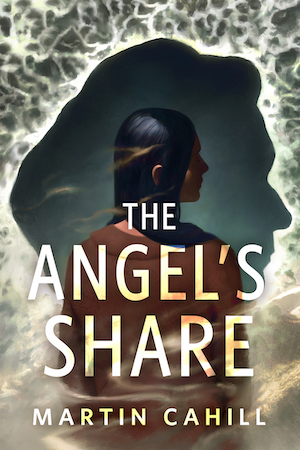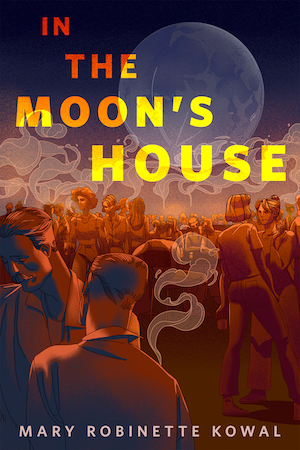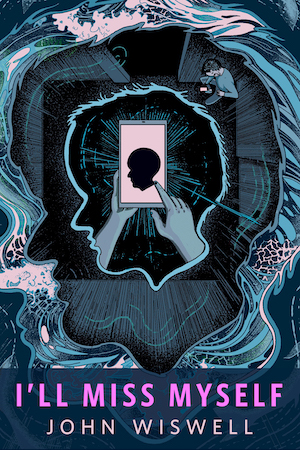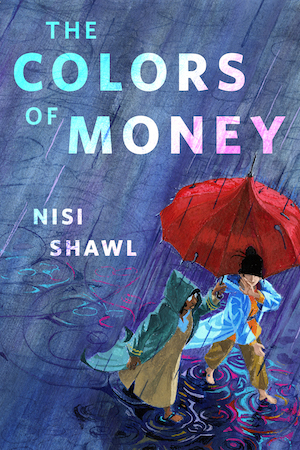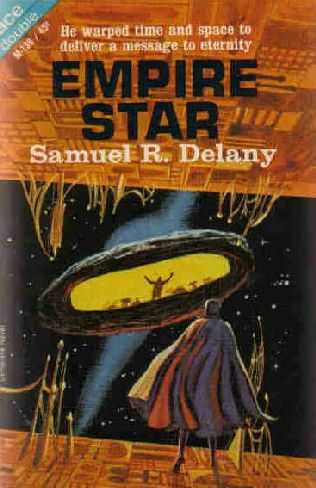Empire Star (1966) was one of my very favourite books when I was fourteen. It’s a short novel. I read it in a very ugly Ace double and then bought it in an only slightly less ugly Sphere double with The Ballad of Beta Two. I read it over and over. What I loved about it was the planets and aliens (I’ve always been a sucker for planets and aliens) and the poetic language and the way the whole story wraps around several times helically. It was the first thing I ever read that did that. It made me happy to work out the structure and put the events in order and daydream about all the places on all the planets called Brooklyn Bridge. It’s got a fast-moving story and lots of lovely scenery and fascinating philosophical depth. I didn’t just like the book a lot, the way a sane grown-up might like a book, I fell head over heels obsessively in love with it. I made myself a t-shirt of it. I read it several hundred times. I was a one-Jo Empire Star fangirl. I had a sign on my bedroom door saying “Entry for J-O Type Persons Only” which is a quote from it.
And yet despite all that, there was a huge thing about it that I missed.
If you’d asked me what it was about, I’d have told you the story. If you’d asked if there were any ideas in it, I’d have told you about the idea of “simplex, complex, and multiplex” as it applies to people and cultures. (I still think that’s a neat idea, especially the thought that “unmentionable” curse words reflect the things that are really important to people.)
I did sort of notice that it was about slavery. Or rather, I certainly noticed that it was about freeing the LLL. The LLL are aliens that can terraform planets. Owning them makes you sad, and the price goes up exponentially with how many you own. Without them, you can’t terraform planets. I don’t think, when I was fourteen, that I’d ever really thought about slavery before. I lived in Britain, where it’s easier to feel more distant from slavery than it is in the US. Britain was deeply involved in the slave trade, but there’s not much day to day evidence of that apparent today. (Actually in Lancaster, where I lived later, there’s a lot of fascinating and appalling information about the slave trade in the Maritime Museum, but I hadn’t been there yet.) In the abstract, of course, I was against slavery. Isn’t everyone? In practice, it hadn’t really crossed my horizon. Empire Star did that thing that only science fiction can do by taking something real and making it fictional in a way that makes it emotionally more real, thus giving it an emotional core that carries back to the real world. Before reading Empire Star, I knew vaguely that slavery was bad. After, I totally knew it in my gut. And yet there’s no brutality, no human slaves, no whips, none of the things you’d put in if you were trying to decorate a message story. The story is about Comet Jo and his quest to take a message to Empire Star. I didn’t even really notice it readjusting my thoughts on slavery as I applied the lesson of the LLL outwards.
I found out when I read his autobiography, The Motion of Light in Water, that Samuel Delany was an African-American. He grew up with people in his family who had been born as slaves. It was only then, ten years later, that I started to have any idea that the LLL might have had more personal connection for him that the Crystalised Tritovians (“multicoloured, multi-faceted, multiplex…”) or anything else in the story. I don’t know how much difference it makes anyway. He wasn’t writing the story to make fourteen-year-old white British girls hate slavery as much as he did. But this is the third piece on Delany’s books I’ve written here (I really really like Delany, I re-read him a lot) and it’s the first time I’ve felt any need to mention any biographical details about him. I think it’s a story a white writer might not have written, or would have written differently. It’s hard to think it was published only three years after Way Station and the Fuzzy books. It seems to come from a different, more grown up, universe.
Comet Jo is a young man on a backwater planet who sees a spaceship crash. One of the alien crew with his dying words tells him he has to take a message to Empire Star. He sets off, with no idea where Empire Star is or what the message is. By the time he gets there, through the helical structure of time, the universe, and the story, he has not only learned the message, he has become the message.
Funny how that happens.


